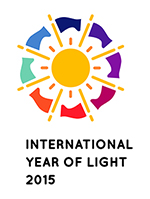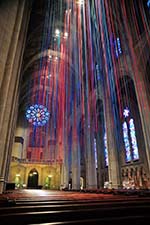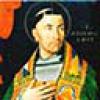 Here we present the first seven paragraphs of On the Reduction of the Arts to Theology (De reductione artium ad theologiam) by Saint Bonaventure (1221-1274), nee Giovanni di Fidanza, Franciscan and outstanding master of the University of Paris (translated by Zachary Hayes, OFM). The title of this booklet, probably written between 1255 and 1257, was not chosen by the Author. Here St. Bonaventure maintains that all the knowledge are originated from a single source-light, God himself, and that, in turn, they are ordered to the knowledge of Sacred Scripture. The excerpt here proposed refers to God as the source of light from whom all the other lights derive, namely all human knowledge. The Author continues distinguishing them from each other according to their proper subject. St. Bonaventure enumerates four of them, in order of increasing importance: the mechanical art (which illuminates the forms produced by man), the sensitive knowledge (natural forms), the philosophical knowledge (intelligible truths), the Sacred Scripture (the salvific truths). However, a closer examination reveals actually six differentiations, which comprehend also rational philosophy, natural philosophy and moral philosophy.
Here we present the first seven paragraphs of On the Reduction of the Arts to Theology (De reductione artium ad theologiam) by Saint Bonaventure (1221-1274), nee Giovanni di Fidanza, Franciscan and outstanding master of the University of Paris (translated by Zachary Hayes, OFM). The title of this booklet, probably written between 1255 and 1257, was not chosen by the Author. Here St. Bonaventure maintains that all the knowledge are originated from a single source-light, God himself, and that, in turn, they are ordered to the knowledge of Sacred Scripture. The excerpt here proposed refers to God as the source of light from whom all the other lights derive, namely all human knowledge. The Author continues distinguishing them from each other according to their proper subject. St. Bonaventure enumerates four of them, in order of increasing importance: the mechanical art (which illuminates the forms produced by man), the sensitive knowledge (natural forms), the philosophical knowledge (intelligible truths), the Sacred Scripture (the salvific truths). However, a closer examination reveals actually six differentiations, which comprehend also rational philosophy, natural philosophy and moral philosophy.
1. «Every good gift and every perfect gift is from above, coming down from the God of Lights», writes James in the first chapter of his epistle. This text speaks of the source of all illumination; but at the same time, it suggests that there are many lights which flow generously from that fontal source of light. Even though every illumination of knowledge is internal, still we can reasonably distinguish what may be called an exterior light, or the light of mechanical art; an inferior light, or the light of sense perception; an interior light, or the light of philosophical knowledge; and a superior light, or the light of grace and of Sacred Scripture. The first light illumines with respect to the forms of artifacts; the second, with respect to natural forms; the third, with respect to intellectual truth; the fourth and last, with respect to saving truth.
 2. So the first light, which sheds its light on the forms of artifacts – things which are, as it were, external to the human person and intended to supply the needs of the body – is called the light of mechanical art. Since this is, in a certain sense, servile and of a lower nature than philosophical knowledge, this light can rightly be called exterior. It is divided into seven, corresponding to the seven mechanical arts listed by Hugh in his Didascalicon, namely, weaving, armour-making, agriculture, hunting, navigation, medicine, and the dramatic art. That the above-mentioned arts are sufficient is shown in the following way. Every mechanical art is intended either for our consolation or for our comfort; its purpose, therefore, is to banish either sorrow or need; it is either useful or enjoyable, according to the words of Horace:
2. So the first light, which sheds its light on the forms of artifacts – things which are, as it were, external to the human person and intended to supply the needs of the body – is called the light of mechanical art. Since this is, in a certain sense, servile and of a lower nature than philosophical knowledge, this light can rightly be called exterior. It is divided into seven, corresponding to the seven mechanical arts listed by Hugh in his Didascalicon, namely, weaving, armour-making, agriculture, hunting, navigation, medicine, and the dramatic art. That the above-mentioned arts are sufficient is shown in the following way. Every mechanical art is intended either for our consolation or for our comfort; its purpose, therefore, is to banish either sorrow or need; it is either useful or enjoyable, according to the words of Horace:
«Poets desire either to be useful or to please».
And again:
«One who combines the useful with the delightful wins universal applause».
If its purpose is to afford consolation and delight, it is dramatic art, or the art of producing plays. This embraces every form of entertainment, including song, instrumental music, poetry, or pantomime. If, however, it is intended for the comfort or betterment of the outer person, it can accomplish its purpose by providing either shelter or food, or by helping in the acquisition of either. If it is a matter of shelter, it will be concerned either with something of a soft and light material, in which case it is weaving; or with something of a strong and hard material, in which case it is armour-making or metal-working, an art which includes the production of every instrument made of iron or of any other metal, or of stone or wood.
If a mechanical art is helpful with respect to food, this can be in two ways, for we take our nourishment from vegetables and from animals. If it is concerned with vegetables, it is farming; if it is concerned with animals, it is hunting. Or again, a mechanical art can be useful in two ways with respect to food. Either it can aid in the production and multiplication of crops, in which case it is agriculture; or it can aid in the various ways of preparing food. Viewed in this way, it is hunting, an art which includes every conceivable way of preparing foods, drinks, and delicacies. This is the task of bakers, cooks, and innkeepers. It is named from only one of these activities, and that because of its nobility and courtly character.
If it is an aid in acquiring either shelter or food, this may be in two ways. Either it serves to fill a need, in which case it is navigation, an art which includes all forms of commerce in articles intended for shelter or for food; or it serves by removing impediments and ills of the body, in which case it is medicine, whether it is concerned with the preparation of drugs, potions, or ointments, with the healing of wounds, or with the amputation of members. In this latter case it is called surgery. Dramatic art, on the other hand, is the only one of its kind. Thus the sufficiency (of the mechanical arts) is evident.
3. The second light, which provides light for the apprehension of natural forms, is the light of sense knowledge. This is rightly called the inferior light because sense perception begins with an inferior object and takes place by the aid of corporal light. It has five divisions corresponding to the five senses. In the third book of his work On Genesis, Saint Augustine bases the adequacy of the senses on the nature of the light present in the elements in the following way. If the light or brightness which is responsible for the distinction of corporal things exists in its own perfection and in a certain purity, this pertains to the sense of sight; if it is mixed with the air, it pertains to hearing; if with vapor, it pertains to smell; if with fluid, it pertains to taste; if with the solidity of earth, it pertains to touch. Now since the sensitive spirit partakes of the nature of light, it thrives in the nerves, whose nature it is to be clear and penetrable; and this light is received in these five senses according to the greater or lesser degree of its purity. And so, since there are five simple corporal substances in the world, namely, the four elements and the fifth essence, the human person has five senses that correspond to these so that the person might be able to perceive all bodily forms; since, because of the well-defined nature of each sense, no apprehension would be possible without a certain similarity and correspondence between the sense-organ and the object. There is another way of determining the adequacy of the senses, but Augustine approves this method; and it seems reasonable, because of the simultaneous correspondence of the elements on the part of the organ, the medium, and the object.
4. The third light, which enlightens the human person in the investigation of intelligible truths, is the light of philosophical knowledge. It is called interior because it inquires into inner and hidden causes through principles of learning and natural truth, which are connatural to the human mind. There is a threefold division of this light into rational, natural, and moral philosophy. That this is sufficient can be understood in the following way. There is the truth of speech, the truth of things, and the truth of morals. Rational philosophy considers the truth of speech; natural philosophy, the truth of things; and moral philosophy, the truth of conduct. We may look at this in a different way. Just as we find in the most high God efficient, formal or exemplary, and final causality, since «God is the cause of being, the principle of intelligibility, and the order of human life», so we may find these in the illumination of philosophy, which enlightens the mind to discern the causes of being, in which case it is physics; or to know the principles of understanding, in which case it is logic; or to learn the order of living, in which case it is moral or practical philosophy. This issue may be viewed in yet a third way. The light of philosophical knowledge illumines the intellect itself and this enlightenment may be threefold: if it directs the motive power, it is moral philosophy; if it directs itself, it is natural philosophy; if it directs the interpretive power, it is discursive philosophy. As a result, humanity is enlightened as regards the truth of life, the truth, of. knowledge, and the truth of doctrine.
Since there are three reasons why one might express through speech what one has in mind: namely, to reveal one's thought; to move another to greater faith, or to arouse love or hatred in another, it follows that discursive or rational philosophy has three subdivisions: grammar, logic, and rhetoric. Of these sciences the first is concerned with expressing; the second with teaching; the third with persuading. The first considers reason as apprehending; the second, as judging; the third, as persuading. Since reason apprehends through appropriate speech, judges through true speech, and persuades through eloquent speech, it is appropriate that these three sciences consider these three qualities in speech.
Again, since our intellect must be guided by formal principles in making a judgment, these principles, in turn, can be viewed from three perspectives: in relation to matter, they are called formal; in relation to the mind, they are called intellectual; and in relation to divine wisdom, they are called ideal. Therefore natural philosophy is subdivided into physics in the proper sense, mathematics, and metaphysics. So it is that physics treats of the generation and corruption of things according to natural powers and seminal principles; mathematics considers abstract forms in terms of their intelligible causes; metaphysics is concerned with the knowledge of all beings according to their ideal causes, tracing them back to the one first Principle from which they proceeded, that is, to God, in as far as God is the Beginning, the End and the Exemplar. However, there has been some controversy among the metaphysicians concerning these ideal causes.
Since the direction of the motive power is to be considered in a threefold way, namely, as regards the life of the individual, the family, and the state, so there is a threefold division of moral philosophy corresponding to this: namely, personal, domestic, and political, the meaning of which is clear from the very names used to designate them.
5. Now the fourth light, which provides illumination with respect to saving truth, is the light of sacred Scripture. This light is called superior because it leads to higher things by revealing truths which transcend reason, and also because it is not acquired by human research, but comes down from the “God of Lights” by inspiration. While in its literal sense it is one, still, in its spiritual and mystical sense, it is threefold, for in all the books of sacred Scripture, beyond the literal meaning
which the words express outwardly, there is a threefold spiritual meaning: namely, the allegorical, by which we are taught what to believe concerning the divinity and humanity; the moral, by which we are taught how to live; and the anagogical, by which we are taught how to cling to God. Therefore, the whole of sacred Scripture teaches these three truths: namely, the eternal generation and incarnation of Christ, the pattern of human life, and the union of the soul with God. The first is concerned with faith; the second with morals; and the third with the ultimate goal of both. The effort of the doctors should be aimed at the study of the first; that of the preachers, at the study of the second; that of the contemplatives, at the study of the third. The first is taught chiefly by Augustine; the second, by Gregory; the third, by Dionysius. Anselm follows Augustine; Bernard follows Gregory; Richard follows Dionysius. For Anselm excels in reasoning; Bernard, in preaching; Richard, in contemplation. But Hugh excels in all three.
6. From what has been said up to now it can be concluded that, according to our primary division, the light coming down from above is fourfold; nonetheless there are six differentiations of this light: namely, the light of sacred Scripture, the light of sense perception, the light of the mechanical arts, the light of rational philosophy, the light of natural philosophy, and the light of moral philosophy. Therefore, in the present life there are six illuminations; and they have their evening, for all knowledge will be destroyed. And therefore they will be followed by a seventh day of rest, a day which knows no evening, namely, the illumination of glory.
7. Therefore, these six illuminations may very fittingly be traced back to the six days of formation or illumination in which the world was made, so that the knowledge of sacred Scripture would correspond to the creation of the first day, that is, to the formation of light, and so on with the rest, one after the other in proper order. And as all those lights had their origin in a single light, so too all these branches of knowledge are ordered to the knowledge of sacred Scripture; they are contained in it; they are perfected by it; and they are ordered to the eternal illumination by means of it. Therefore all our knowledge should come to rest in the knowledge of sacred Scripture, and particularly in the anagogical understanding of Scripture through which any illumination is traced back to God from whom it took its origin. And there, the circle is completed; the pattern of six is complete, and consequently there is rest.
St. Bonaventure, On the Reduction of the Arts to Theology, English transl. by Zachary Hayes, OFM, Franciscan Institute. This edition is in large part based on the copyrighted work of Sr. Emma Therese Healy, S.S.J., which was published by The Institute in 1940 and reprinted in 1955.
